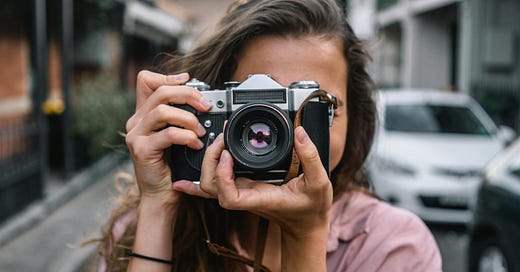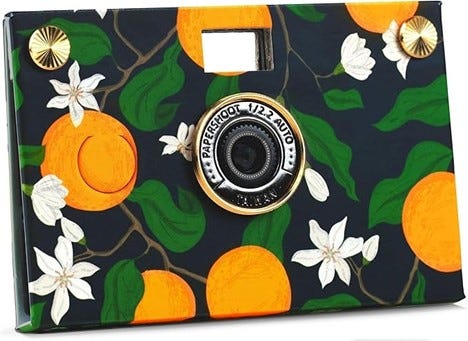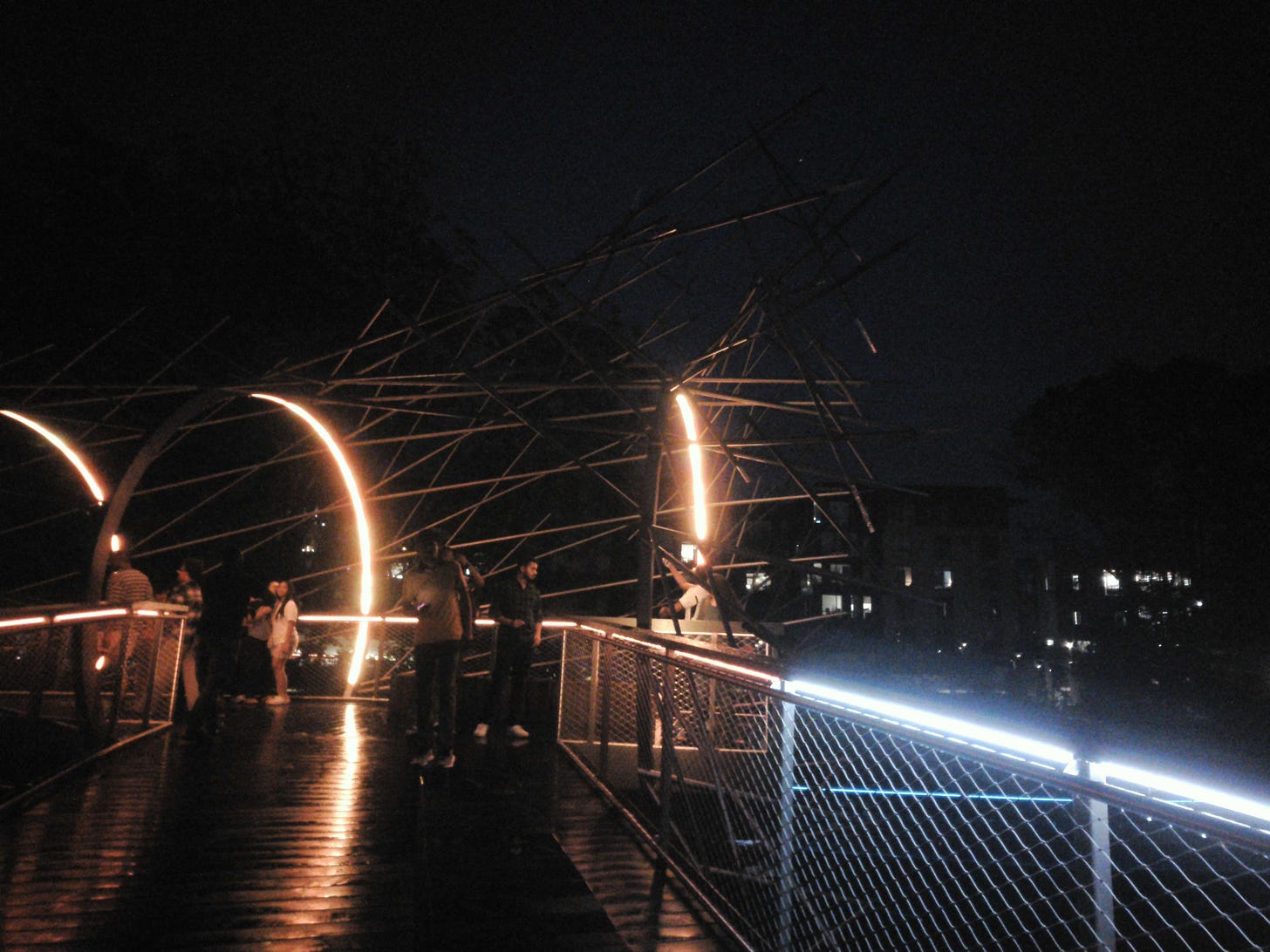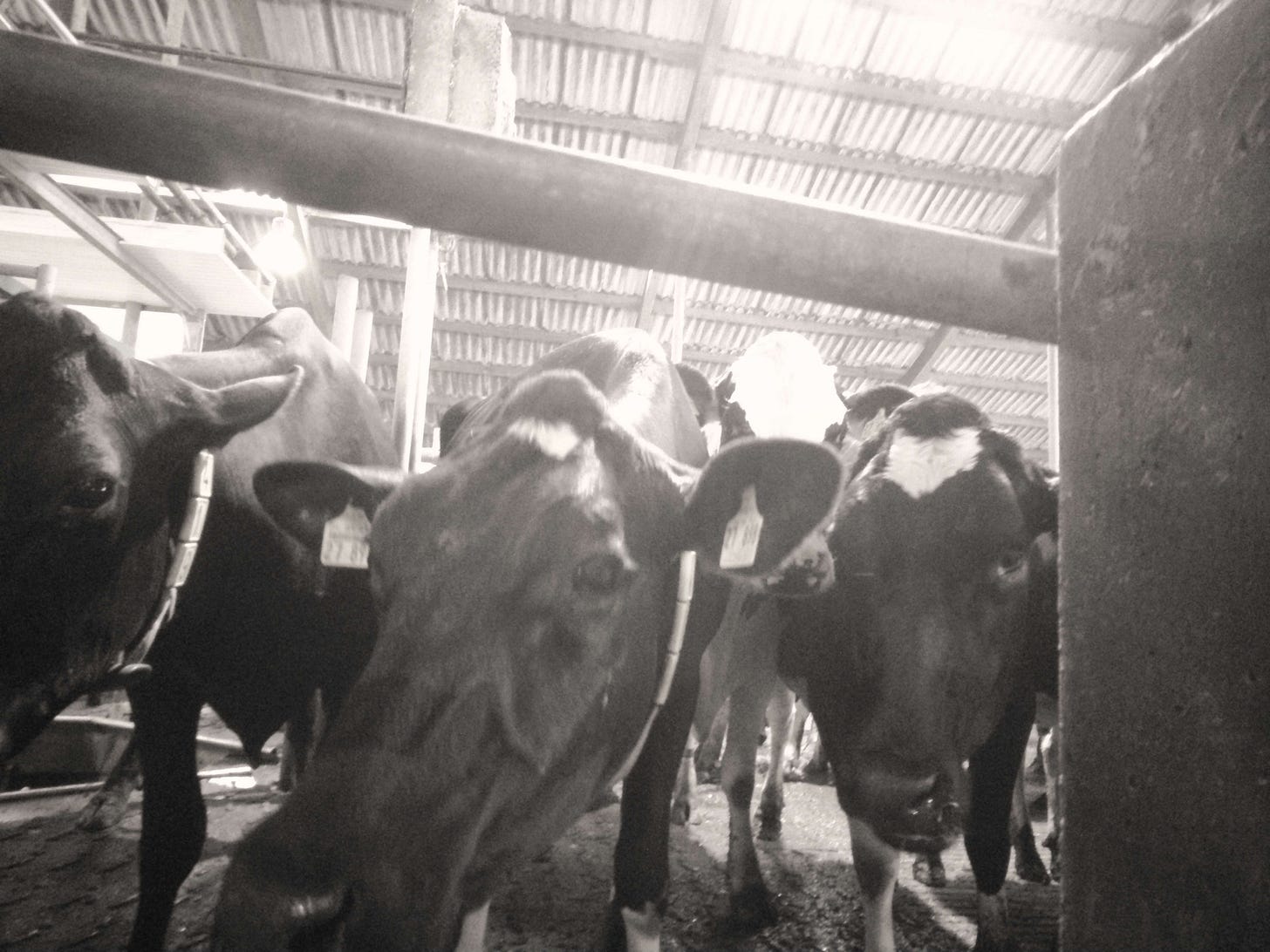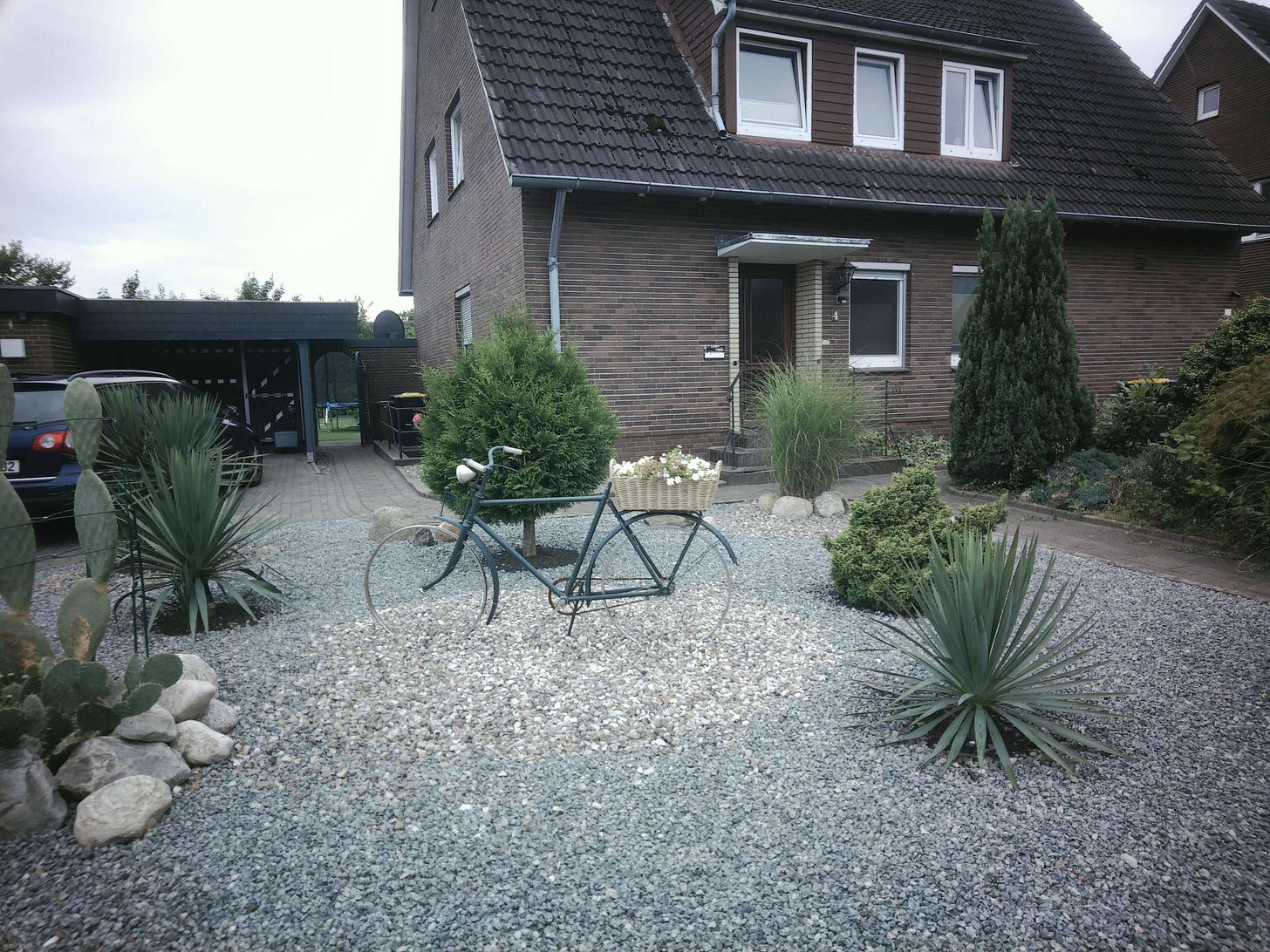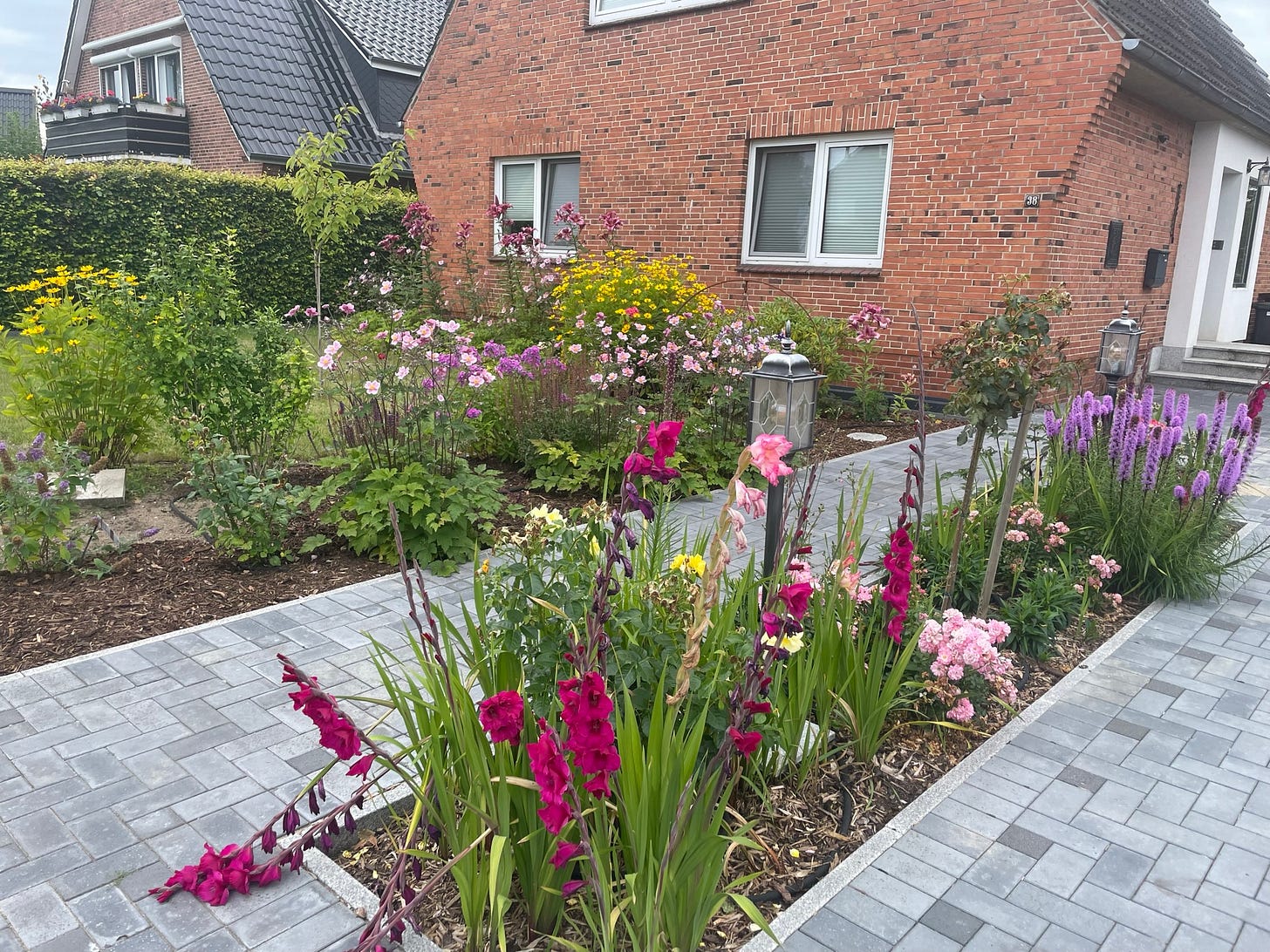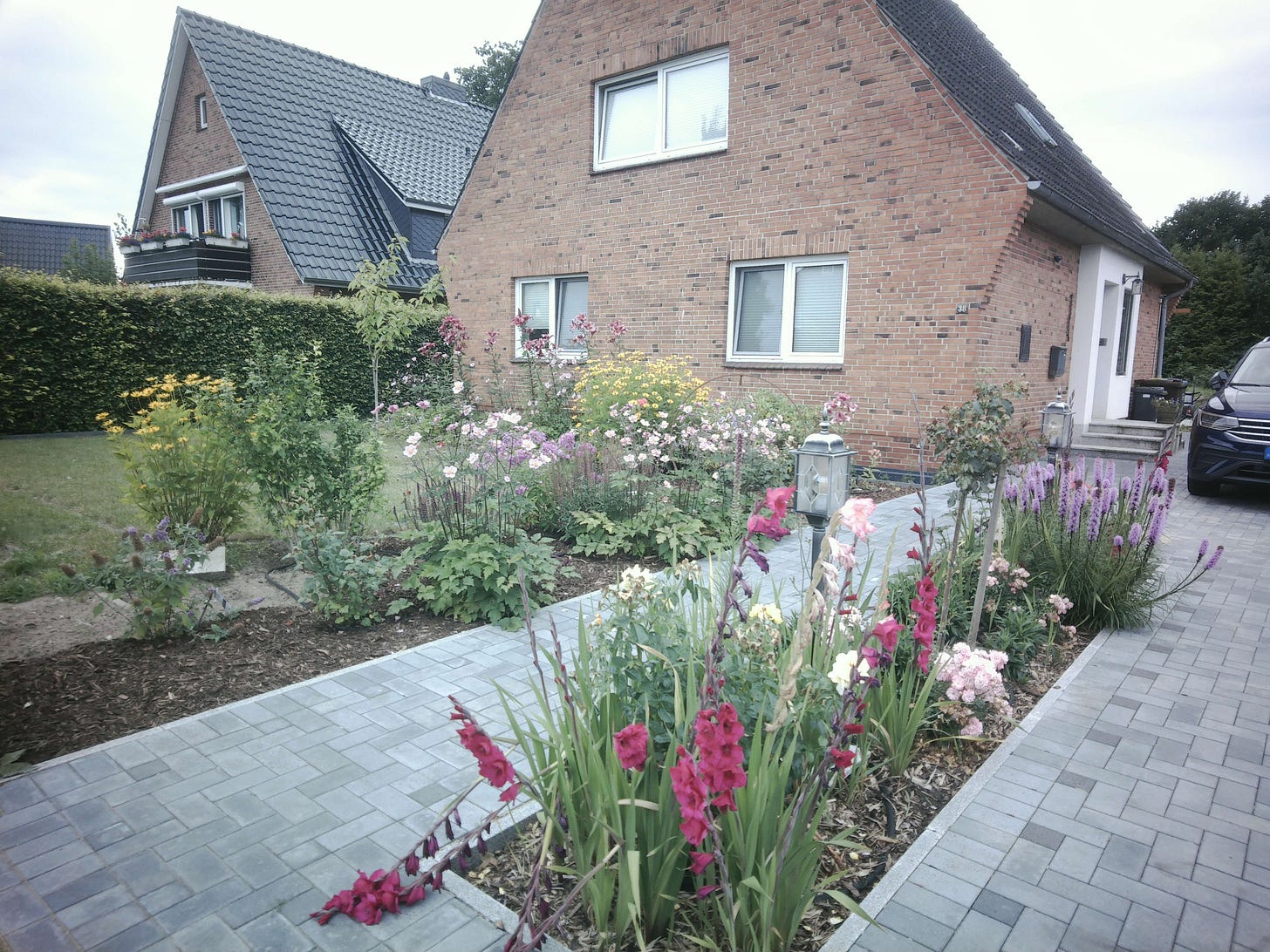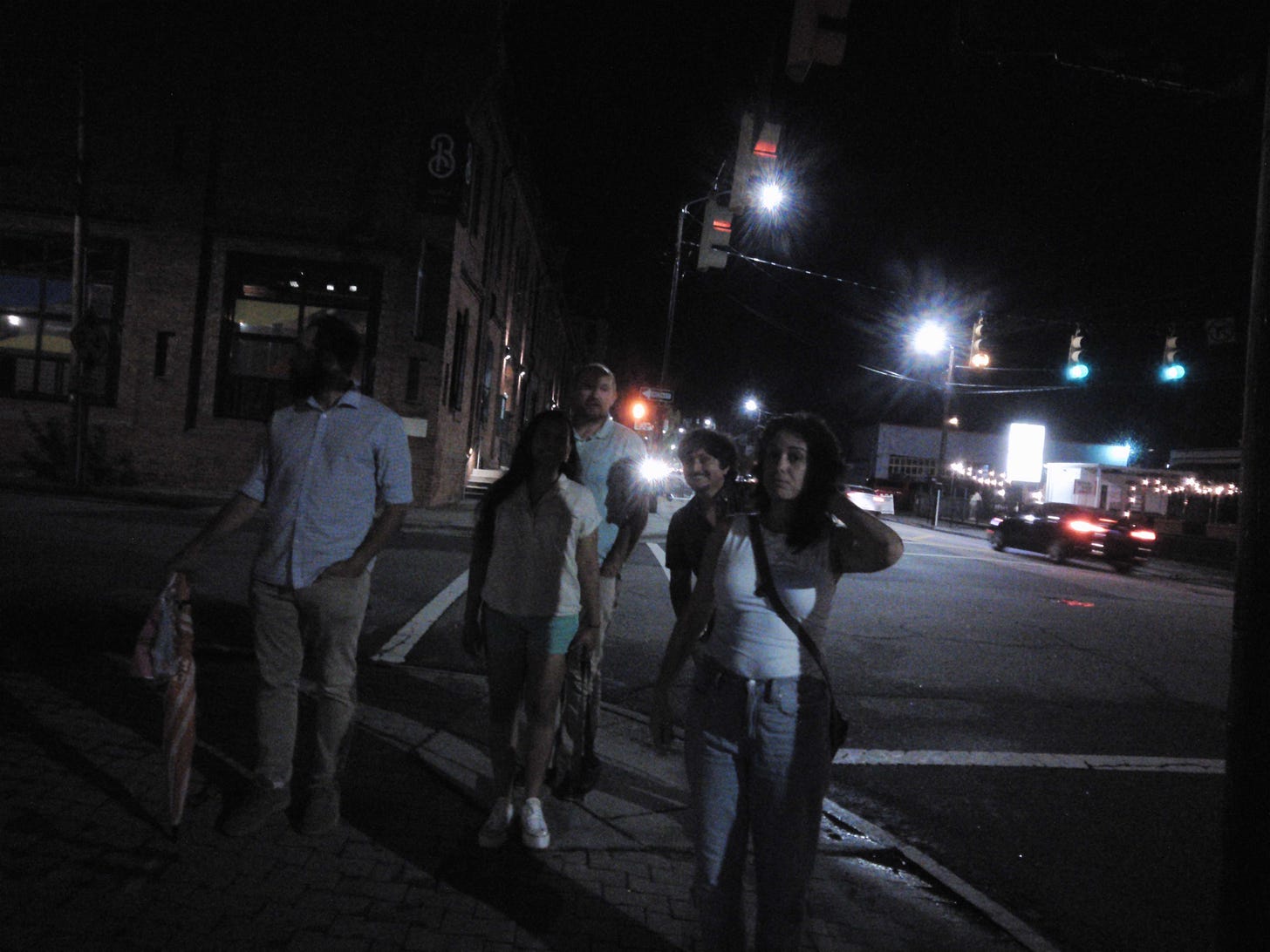Scroll Sanity is made possible by paid subscriptions. If you value the work I’m doing, consider becoming a paid subscriber today.
I have written in the past about how my former smartphone, an iPhone 12 mini, met my needs when it came to picture-taking and picture-sharing. At home, I keep my smartphone powered off most of the time and then power it back on to take pictures if I know I’m headed to a special event like a birthday party. On the daily, I’m taking far less photographs than I used to when I was tethered to my smartphone, and I feel fine about it. When we’re together as a family and I want to document a sweet moment, I can always use my husband’s smartphone, which is usually handy.
But this was not meant to be a permanent camera solution.
A few weeks ago, I was gearing up for an extended trip to visit my husband’s family in Germany. I knew that I’d want a camera to document the special times we’d be spending with our extended family, whom we rarely get to see.
Seven months into my Light Phone experiment, I decided to start searching Reddit for favorite camera options amongst dumbphone users. (My favorite replies were the ones that chastised people for wanting to take pictures in the first place. “Free your mind,” one of them implored. Are they wrong?)
I was looking for small, lightweight cameras that could take good enough pictures and easily fit into my fanny pack. I decided on two digital cameras: a PaperShoot and a used Canon PowerShot SD1000 from eBay.
I won’t delve too much into my experience with the Canon PowerShot. I used this camera exclusively for over a decade before the iPhone became my main camera, and I loved it. So I was surprised to find that I wasn’t drawn to using it anymore. Like, at all.
It has a screen to view what you’re photographing, as well as to review the photos you’ve already taken, but the screen is about 3 inches by 2 inches and it feels almost comically small, especially compared to the mammoth screen on an iPhone, which is more than 3 times the size. And yet, it wasn’t designed for the photographer to take photos using the viewfinder, so the tiny screen is the best option.
All in all, this camera has been collecting dust during my travels and I can’t even comment on the quality of the photos because I don’t have the cable to connect it to my computer and my laptop doesn’t have a place to insert SD cards.
So, moving on.
Extremely lightweight and as small as a pad of Post-it notes, I took to the PaperShoot right away.
There is no screen to view your photos, only a viewfinder that is basically a square hole cut into the cardboard cover. (Yes, the covers are made from some kind of paper product, hence the name. They do have many cute designs, though, and they’re interchangeable!) There is no flash, but there are four different filters to choose from: color, black and white, sepia and blue.
[They market it as an improvement on the disposable cameras of yore, which I have also tried in my quest to find a camera solution. While they are fun to use, I still haven’t made the effort to find out how to have the photos printed - and these relics of the past have become expensive!]
Downsides: the PaperShoot is battery-operated – two AAA batteries, which feels so old-school for a camera these days. I suppose you could use rechargeable batteries, but still. Annoying. Also, the lag time between pressing the shutter button and hearing the camera snap a picture is pretty frustrating when you’re used to the iPhone’s ability to snap a picture (many pictures) immediately.
As can be expected, the quality of the photos leaves much to be desired. Obviously, it doesn’t do well in low light, and while I find the grainy quality of the photos somewhat endearing, it’s hard to accept it when you’re used to the high-quality photos produced by an iPhone. They lack the saturation of color that comes from modern digital technology and they’re blurry when we’ve grown accustomed to perfect crispness. In short, they are imperfect.
Can you guess which photo was taken by the iPhone?
“So, you’re buying a crappy camera that takes crappy pictures?” my husband asked when I made my purchase.
Perhaps. And yet, I still like using the PaperShoot camera. Its exterior design is aesthetically pleasing, and it’s fun to go back in time and take photos without knowing how they’re going to turn out. I’ve missed that anticipation of waiting to see what shows on the film (in this case, SD card). I can take a photo but still remain in the moment, without engaging with a smartphone that might take me down who knows what rabbit holes.
Still, in real life, I find myself toggling back and forth between taking photos with the PaperShoot and then switching to my iPhone to make sure I have an actual good photo of whatever moment I’m trying to capture.
The truth is, the PaperShoot is not a “real” camera that I would trust with the task of taking reliably good pictures to send with friends and family or put on a Christmas card or photobook. But not every moment needs to be picture perfect! I still enjoy seeing the less than perfect photos created by my PaperShoot camera, which I always keep in my fanny pack, at the ready!
I guess I need to decide what’s more important to me: taking high quality photos, which would mean always carrying an iPhone on me or purchasing a serious digital camera, which would be bulky and expensive? Or being able to capture little moments on a whim—without a smartphone and with less-than-perfect results? Perhaps I can have both.
Another question I’d like for us to consider is this one:
What are photographs for?
Over the last few years, as my social media presence has drastically dropped off, the only use I have for my photographs is to share them with my friends and family, mostly via WhatsApp. But what about the artsier photos that aren’t necessarily of my children being adorable? The ones that aren’t for documenting a moment but simply for capturing something that catches my eye?
When I was younger, I used to love being an amateur photographer, which I have written about before. I displayed many of those “artsy” photos on Facebook or on my blogs. Those were like the walls of my virtual photo galleries, a place for me to share my “art.” But ever since I stopped using social media regularly (and limited my posting to barely nothing), I am wondering – where can my photographs live? How can I share them with the world in a way that feels authentic to me, without falling headfirst into the crazy labyrinth that is social media?
🧹Housekeeping
🌀Podcast: As you may have noticed, we have taken a hiatus this summer, but we will be back with new episodes in the fall!
✍️I Recommend listening to this interview with a former influencer who has given up her life on social media for a life IRL.

